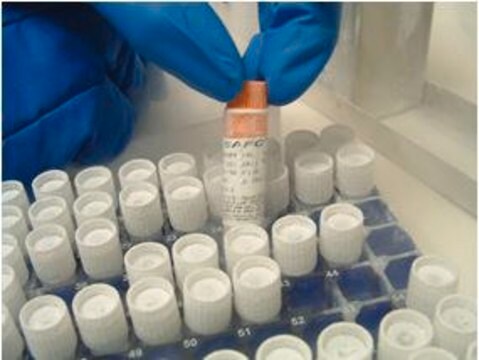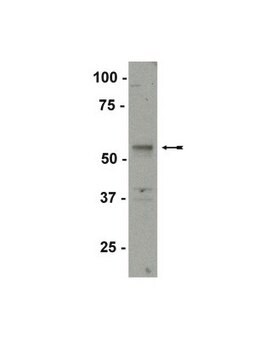推荐产品
product name
CHO/dhFr-, 94060607
生物源
hamster ovary
增長模式
Adherent
染色體組型
Modal no. 20
形態學
Epithelial
產品
Not specified
受體
Not specified
技術
cell culture | mammalian: suitable
運輸包裝
dry ice
儲存溫度
−196°C
細胞系來源
Hamster Chinese ovary
細胞系描述
The CHO/dhFr- cell line lacks the enzyme dihydrofolate reductase (DHFR) which is necessary for purine synthesis. In the absence of exogenous purines, this enzyme is required for growth. Hence the CHO/dhFr- cell line has growth requirements for hypoxanthine (or adenine), glycine and thymidine. However, the cells will continue to grow without the addition of hypoxanthine and thymidine because the cells can obtain sufficient from the medium. α MEM minus does not contain the ribonucleosides or the deoxyribonucleosides, and will not support the growth of CHO/dhFr- or its serum free adaptation as neither contains the gene to produce DHFR. (See attached data sheet).
應用
CHO/dhFr- has been used to study the relation between local chromatin mobility and transcriptional activity. It has also been used as a transfection lineage and also as a negative control in cytofluorometry experiments.
培養基
IDMEM + 2mM Glutamine + 0.1mM Hypoxanthine + 0.01mM Thymidine + 10% Foetal Bovine Serum (FBS).
例行更新培養
Split sub-confluent cultures (70-80%) 1:4 to 1:6 i.e. seeding at 2-4x10,000 cells/cm2 using 0.25% trypsin/EDTA; 5% CO2; 37°C
其他說明
Additional freight & handling charges may be applicable for Asia-Pacific shipments. Please check with your local Customer Service representative for more information.
商品
Eukaryotic cell lines aid in complex post-translational modifications and folding of recombinant proteins. Find suitable recombinant protein production cell lines at sigmaaldrich.com
我们的科学家团队拥有各种研究领域经验,包括生命科学、材料科学、化学合成、色谱、分析及许多其他领域.
联系技术服务部门






